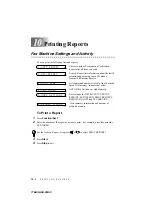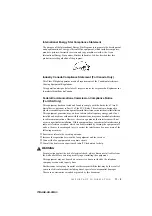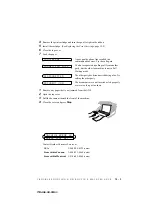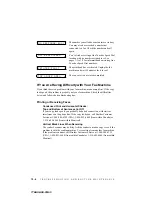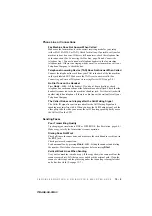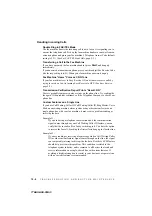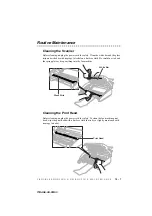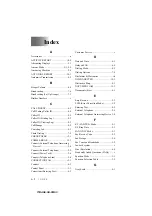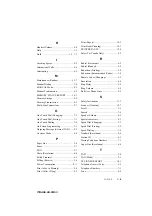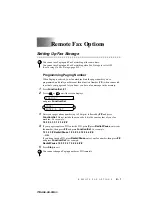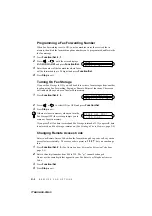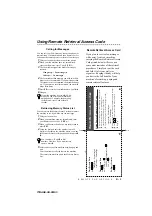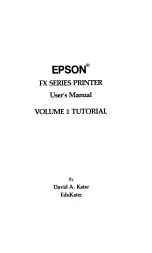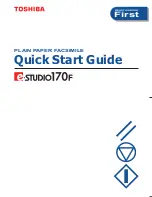
12 - 6
T R O U B L E S H O O T I N G A N D R O U T I N E M A I N T E N A N C E
T7BASE-US-FM5.5
Handling Incoming Calls
Double Ring in FAX/TEL Mode
The fax machine knows the incoming call is not a fax so it is signaling you to
answer the telephone call. Pick up the fax machine handset or answer from an
extension phone and press your fax machine’s Telephone Answer Code (default
setting is #51). (See For FAX/TEL Mode Only, page 5-5.)
Transferring a Call to the Fax Machine
If you have answered the fax machine handset, press
Start
, and hang up
immediately.
If you answered at an extension phone, press your three-digit Fax Receive Code
(the factory setting is
51). When your fax machine answers, hang up.
Fax Machine “Hears” Voice as CNG Tone
If your fax machine is set to Easy Receive ON, and it answers voice calls by
trying to receive a fax, try turning Easy Receive to OFF. (See Easy Receive,
page 5-3.)
Transmission Verification Report Prints “Result: NG”
There is probably temporary noise or static on the phone line. Try sending the
fax again. If the problem continues, call the Telephone Company to check your
phone line.
Custom Features on a Single Line
If you have Call Waiting, Caller ID, Call Waiting/Caller ID, Ring Master, Voice
Mail, an answering machine, alarm system or any other custom feature on a
single phone line with your fax machine, it may create a problem sending or
receiving fax data.
Example #1:
If you are having a telephone conversation and a fax communication
signal comes through on your Call Waiting Caller ID feature, you can
verify that the second call is a fax by switching to it. You have the option
to receive the fax call, by asking the first caller to hang up to clear the line.
Example #2:
If you are sending or receiving a fax message while a Call Waiting Caller
ID (or other custom feature) signal comes through on the line, the signal
can temporarily interrupt or disrupt the fax data. Brother’s ECM feature
should help overcome this problem. This condition is related to the
telephone system industry, and is common to all devices that send and
receive information on a single, shared line with custom features. If
avoiding a slight interruption is crucial to your business, a separate line
with no custom features is recommended.





